Ferrets
Ultimate Guide to Keeping Ferrets
Australian Escape-Proof Ferret Cages
Ferrets make very playful, intelligent, and highly active pets.
Their cute faces and furry sleek bodies coupled with their mischievous antics will provide hours of delight and companionship for children and adults.
Ferrets are entirely domesticated versions of the wild polecat and are suitable as pets even in restricted spaces such as apartments or units.
They are social animals and love human companionship. They are very intelligent and will respond to their name and can even learn tricks.
Because of their social nature it is a good idea to keep more than one ferret especially if you cannot always devote 60 minutes or more each day to playing and interacting with your ferret.
Due to their intelligence, curiosity, agility and sleek bodies ferrets have gained a reputation for being brilliant escape artists who can find their way through the most improbable small holes.
This is why you need to invest in a high quality ferret cage from Somerzby.
What Are the Laws About Keeping Ferrets in Australia?
In some countries and in Queensland and the Northern Territory ferrets are considered pests.
In NSW, Victoria, WA, SA, and Tasmania ferrets are accepted as pets without any legal restrictions.
Australia’s climate and predation by dogs and cats has probably prevented escapee ferrets from becoming a pest in most parts of Australia.
If you keep ferrets you must make sure that you escape proof their cage, your home and property to prevent ferrets escaping into the wild.
You may keep ferrets as pets in ACT provided you obtain a license. It is illegal to keep ferrets in Queensland and the Northern Territory.
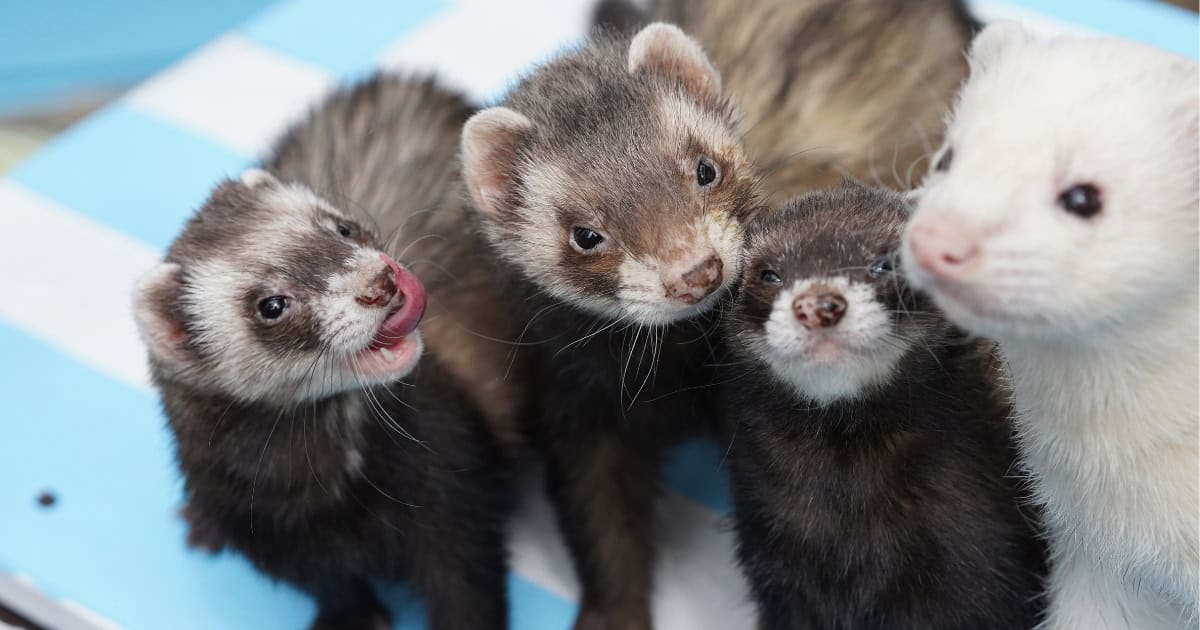
High Quality Ferret Cages – Australia
Ferrets need to be housed in escape proof cages and any free-range areas you allow them to access must also be escape-proofed.
This is for their protection as well as your peace of mind.
Remember too that mice, rats, guinea pigs, reptiles, and birds are their natural prey so if you have these pets as well they need to be kept separate.
Ferrets are highly active in short bursts (similar to a small dog). You should choose a cage that is large enough to allow your ferrets to run and play and get the exercise they need.
When choosing a high quality ferret cage you should look out for the following:
- Size – spacious enough for their exercise needs
- Escape proof – ferrets are renowned for their ability to squeeze through tiny gaps
- Easy-to-clean – ferrets can be toilet trained but you will still need to clean out their sleeping areas and litter boxes
- Dark, safe sleeping areas – a ferret’s typical den in the wild is usually a dark safe hole so look to recreate this with a cozy sleeping box
- Weatherproof – if you are keeping your ferrets outside you need to know that they are protected from the weather with solid weatherproof design and construction
Pull out trays for easy cleaning are an essential for any well designed ferret cage; they just make the job so much easier. Somerzby ferret cages all feature stainless steel slide out trays that make cleaning a breeze.
Platforms and ladders offer your ferrets extra dimensions to explore and play in their cage and these are standard features of all Somerzby ferret hutches.
Galvanised mesh is standard on all Somerzby ferret cages and runs.
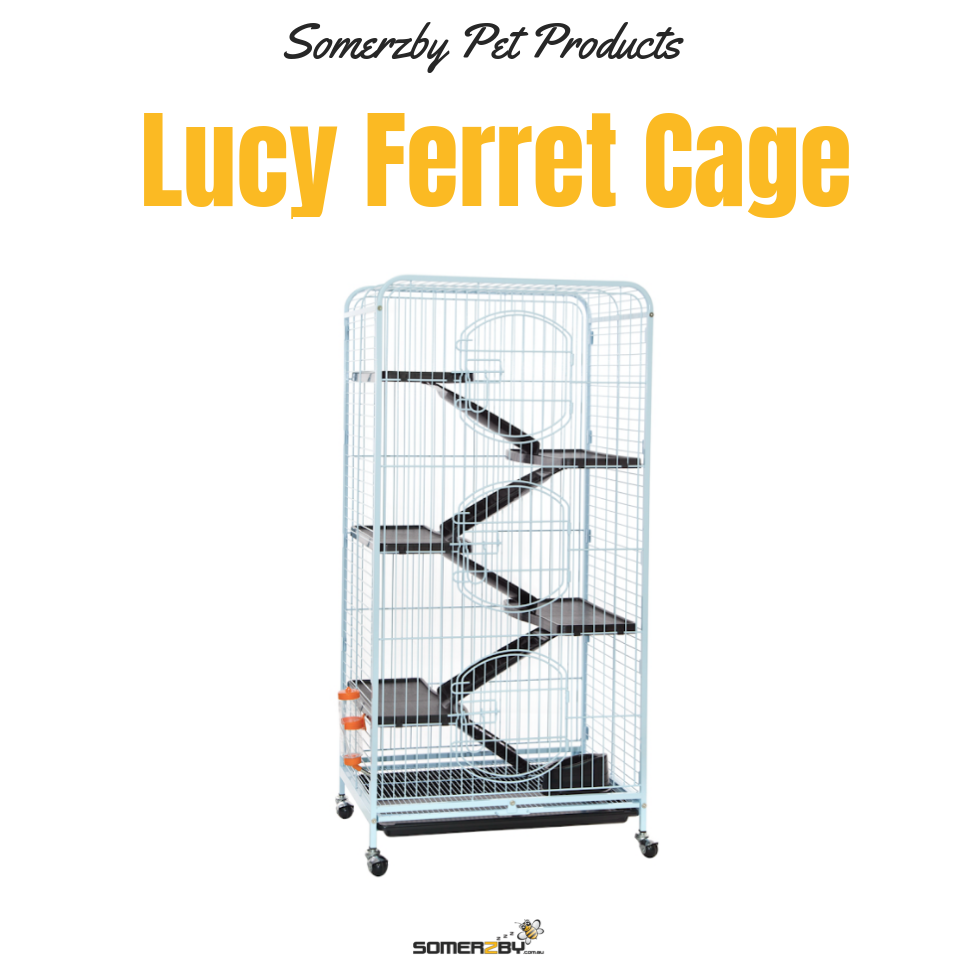
Lucy Ferret Cage
The Lucy Ferret Cage is a great way to house your ferrets in comfort, safety, and style. Measuring 132cm x 64cm x 44cm it offers lots of space to play and rest for 2-3 ferrets.
The ramps and multiple levels offer lots of play space to explore.
White electro coated paint keeps your ferrets safe and also allows for excellent ventilation and some other features include:
- Caster wheels for easy moving
- 5 platforms
- 5 ramps
- Pull out plastic tray for cleaning
- 250ml drink bottle
- 3 front opening doors for easy access
- Plastic Food Bowl
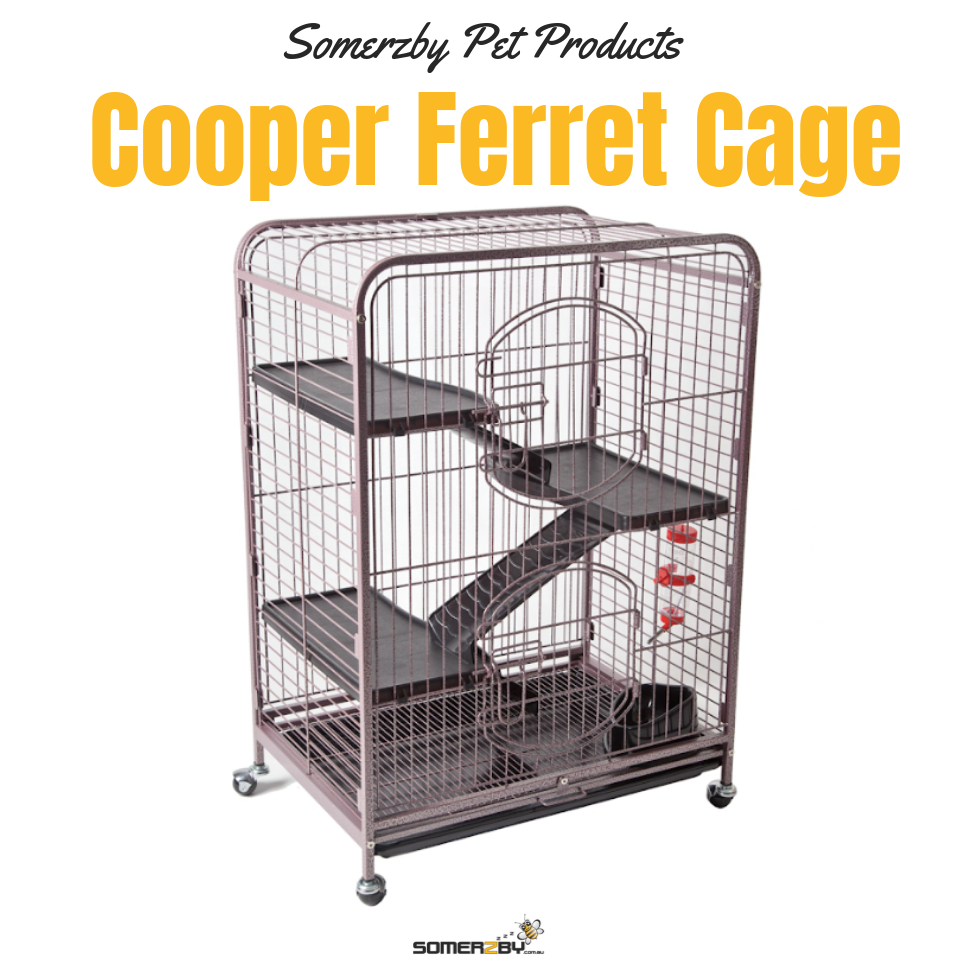
Cooper Ferret Cage
The Cooper has very generous measurements with an overall dimensions of 84cm x 64cm x 55cm allowing your ferrets to run around and play as much as they want.
The small gaps in between the steel poles allows maximum ventilation while offering protection from snakes and other predators.
Features include:
- Grey hammerite coated steel
- 3 platforms and 3 ramps
- Plastic food bowl
- 250ml drink bottle
- 2 front opening doors
- Pull out plastic tray for cleaning
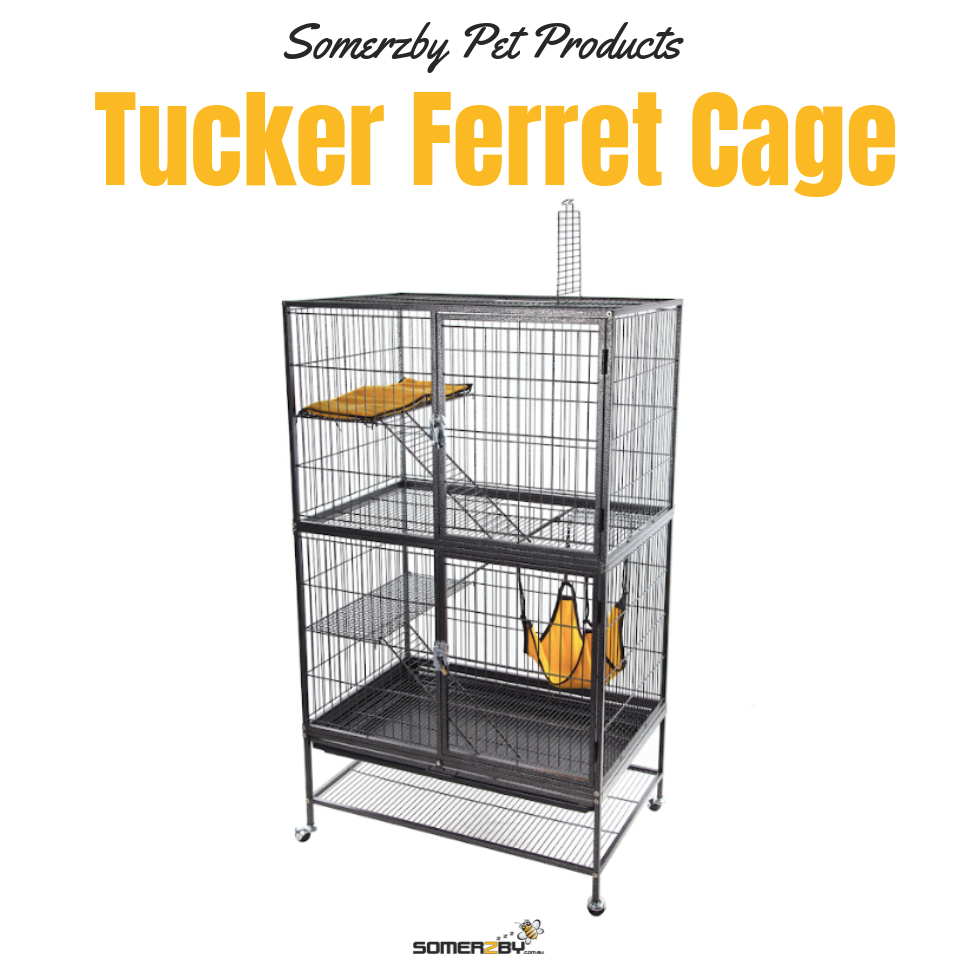
- 1 hammock
- 1 cushioned platform mat
- Storage shelf at bottom
- Plastic pull out tray for cleaning
- Caster wheels for easy moving
- 2 large front opening doors
- Latch on top to open roof
Where Should I Put My Ferret Cage?
Ferrets don’t cope with heat, so you need to think carefully about the ideal placement for your Somerzby ferret hutch.
It is particularly important to ensure the hutch is shaded from the sun during the hottest parts of the day throughout the summer.
You may need to monitor the temperature inside their hutch from time to time as hot days may occur even during the cooler months.
If you keep the hutch on the lawn that shady spot may become something of a mud bath during the wet months.
If the run has no mesh floor check that there are no gaps under the run due to uneven ground levels because ferrets are expert escape artists.
It’s always a good idea to choose a run that has a mesh floor such as the Somerzby Deluxe Cottage. Alternatively place the run on a hard level surface such as concrete.
How Should I Set Up My Ferret Cage?
Ferrets need access to clean water and good food is essential. Use heavy non-tip bowls to avoid mess in the feeding area. Water bottles work well to keep the feeding area dry.
You can train your ferrets to use a toilet tray just as you would with a cat. Keep a little box filled with a quality paper-based litter for toileting.
Do not use sawdust as ferrets may inhale the dust and this can cause health problems. Place this in a corner well away from the feeding area but near their sleeping area.
Old towels or clothing are perfectly suited as bedding materials.
Ferrets are highly inquisitive and love to play so make sure you keep a selection of their favourite toys inside the run.
Common cat toys are a great choice for your ferrets but check there are no small parts that could be swallowed.

What Do Ferrets Eat and Drink?
Ferrets are carnivores. Ideally, they need to eat whole animals; birds, rabbits, and mice and you can buy these frozen from butchers or pet shops.
Being able to rip and tear whole animals and chew bones will keep your ferret’s teeth and digestive system in great shape.
If you prefer to use dry food, choose a really high quality dedicated ferret dry food from a veterinarian or pet shop.
Ferrets do not digest carbohydrates and so you should not feed them sugary treats, fruits, cereals, vegetables, poor quality cat food or dog food.
Clean fresh water should always be available.
Should I Protect My Ferrets From Heat?
Yes, ferrets do not cope with extreme heat. Their thick fur and inability to pant or sweat makes them very prone to heatstroke in temperatures above 25° or 26° C.
Keeping your ferrets in air-conditioned parts of the house during the hot months is a very effective way of keeping them cool and comfortable.
Alternatively, cool tiled areas of the house such as the laundry or underground/ basement areas may work.
The Somerzby range of ferret hutches feature solid asphalt roofs that help deflect heat and the large mesh covered windows provide good ventilation.
This makes them a great option for housing your ferrets outside. Remember to place the ferret hutch in a shady position during the hot season as a heat protection measure.
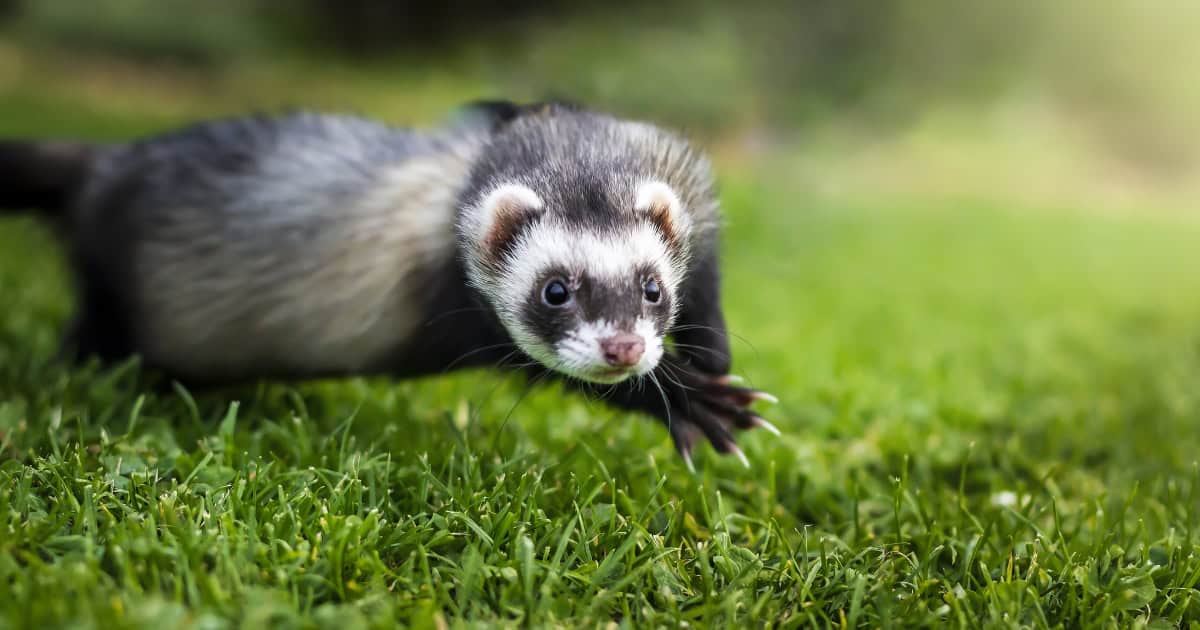
Hygiene Tips For Ferrets
Ferrets generally groom themselves, just like cats, but you can brush them from time to time if they enjoy it.
Brushing may be especially helpful when your ferret is shedding their fur.
Ferrets don’t need to be bathed frequently either unless they have been playing in the mud.
Frequent washing will encourage oil secretion from the ferret’s skin and this can smell.
Ferrets cannot retract their claws and so will need to be clipped every few weeks.
Dental disease is one of the major issues facing domestic ferrets, but poor dental health is usually caused by a poor diet. This can be remedied through a good diet.




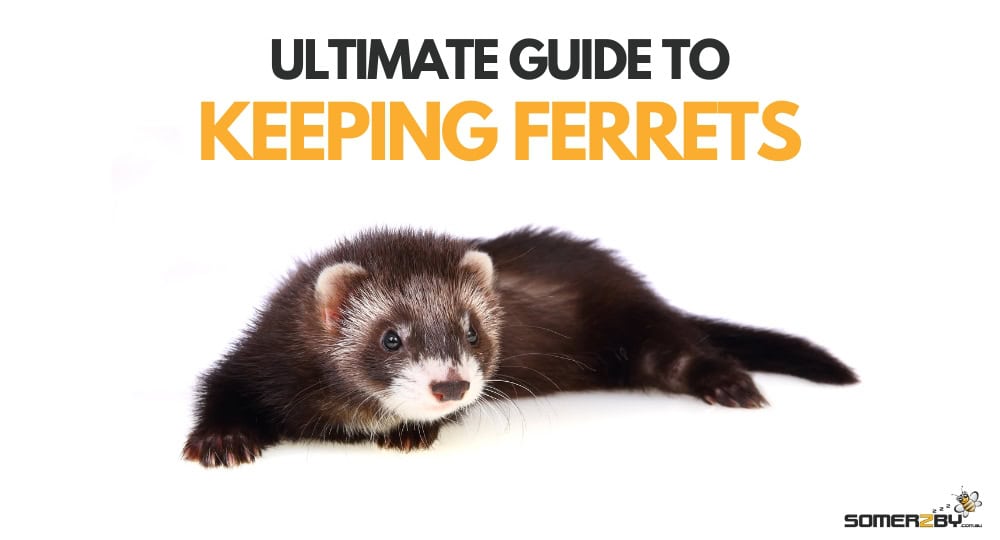
Hi I have a ferret who has had a litter of 7 kits and they have outgrown their nursery, what would be my best option